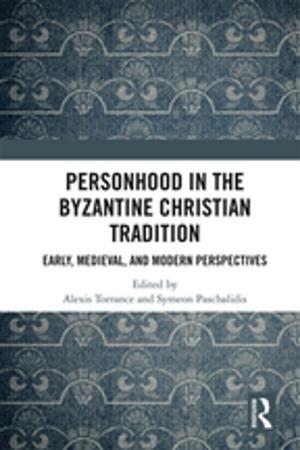Roma in Europe
The Politics of Collective Identity Formation
Nonfiction, Social & Cultural Studies, Social Science, Cultural Studies, Ethnic Studies, Religion & Spirituality, Philosophy, Political| Author: | Ioana Bunescu | ISBN: | 9781317061892 |
| Publisher: | Taylor and Francis | Publication: | April 8, 2016 |
| Imprint: | Routledge | Language: | English |
| Author: | Ioana Bunescu |
| ISBN: | 9781317061892 |
| Publisher: | Taylor and Francis |
| Publication: | April 8, 2016 |
| Imprint: | Routledge |
| Language: | English |
This path-breaking book explains the processes through which the heterogeneous population of Roma in Europe constitutes itself into a transnational collective identity through the practices and discourses of everyday life, as well as through those of identity politics. It illustrates how the collective identity formation of the Roma in Europe is constituted simultaneously in the local, national, and European contexts, drawing attention to the mismatches and gaps between these levels, as well as the creative opportunities for achieving this political aim. Bunescu demonstrates that the differences and stereotypes between the Roma and the non-Roma, as well as those among different groups of Roma, fulfil a politically creative function for the constitution of a unified transnational collective identity for the Roma in Europe. The book is unique - comprising chapters ranging from local ethnographic accounts of inter-ethnic relations of rural Roma in a Transylvanian village, to interviews with international Roma political activists, controversial Roma kings, and an extensive chapter on their role of bridging the local and the higher levels of identity politics, visual depictions of a diversity of Roma living spaces and interpretations of the politics of space in private dwellings, as well as in public venues, such as at Roma international festivals.
This path-breaking book explains the processes through which the heterogeneous population of Roma in Europe constitutes itself into a transnational collective identity through the practices and discourses of everyday life, as well as through those of identity politics. It illustrates how the collective identity formation of the Roma in Europe is constituted simultaneously in the local, national, and European contexts, drawing attention to the mismatches and gaps between these levels, as well as the creative opportunities for achieving this political aim. Bunescu demonstrates that the differences and stereotypes between the Roma and the non-Roma, as well as those among different groups of Roma, fulfil a politically creative function for the constitution of a unified transnational collective identity for the Roma in Europe. The book is unique - comprising chapters ranging from local ethnographic accounts of inter-ethnic relations of rural Roma in a Transylvanian village, to interviews with international Roma political activists, controversial Roma kings, and an extensive chapter on their role of bridging the local and the higher levels of identity politics, visual depictions of a diversity of Roma living spaces and interpretations of the politics of space in private dwellings, as well as in public venues, such as at Roma international festivals.















